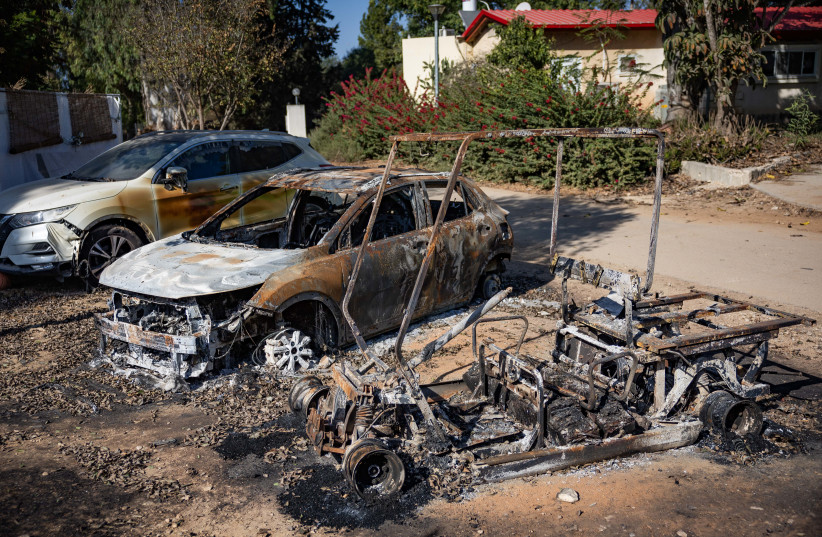During the earliest morning hours of October 7, Commander (res.) Nadav Serlin was already up with his daughter when he heard explosions in the distance. At 6 a.m. on Simchat Torah, he was focused on taking care of his one-and-a-half year old, but when he heard a clear sound of bombs erupting, he knew something strange was afoot.
Serlin immediately sent a text message to his battalion commander asking if he was needed. Even without a call to reserve duty, he responded for duty. The reservist hit the road to head south, arriving at his base at around 9:15 a.m., prepared with equipment for the unexpected.
His team departed for Sderot, before being redirected to Kibbutz Nahal Oz. The mission seemed straightforward on paper, but in practice, it was far more complex: finding the terrorists remaining in the community and eliminating them—every last one of them.
Serlin and his company swept through the streets and homes of Nahal Oz searching for terrorists, finding the bodies of many along the way. They checked in homes, announcing the presence of the Givati brigade, but only spent a moment with families before having to continue their search.
The process of tracking down terrorists was lengthy and took days, Serlin told The Jerusalem Post. “I personally found 23 dead terrorists,” he stated, as he discussed the battles and continued attacks on Kibbutzim in the south like Nahal Oz following the October 7 massacre.
Terrorists shot at them and were eliminated in response.
As the active threat was eliminated, Serlin helped evacuate more than 100 civilians from Nahal Oz to a nearby army base before returning for training for what would ultimately be a battle for the fate of Israel: a fight to eliminate Hamas by any means.
Three weeks later
After three weeks of preparation, his brigade began what would end up being a 29-straight-day maneuver into the Gaza Strip. Those 29 days closed out just a week ago.
From October 26 on, Serlin and his brigade were faced with hundreds of terrorists, killing more than 150. Unfortunately, within those battles, his unit suffered seven casualties and several more injuries.
His company commander, Yehuda Cohen, was one of those seven casualties, having been killed in action. When Cohen fell in battle, Serlin was tapped to become the company commander.
He immediately approached his unit, instructing them to not let Cohen’s death be for nothing—he will be avenged, he said.
One "moment of light" he experienced, "one of the best memories," was receiving his new title after his commander was tragically killed. "Right away, I went to the unit and instead of breaking down in tears, I told my unit that they needed to make sure that their fellow soldiers' deaths were not for nothing,” he told the Post.
“It shows we are ready to do whatever it takes to complete this mission.”
When asked how he and his unit were able to mourn while fighting for the fate of the nation, he explained that mourning is not at the top list of priorities at the moment. “We aren’t mourning right now. Families understand, and they want us to finish what needs to be done,” he said. “When we are done we will go to the graves, sit with the families, and do everything that we need to do.”
Serlin emphasized that the priority is eliminating Hamas, and in order to do so, that meant sacrificing time with his wife and his child, neither of whom he has been able to see in 32 days.
He’s still shaken by many of the sights he’s seen in Gaza. “The worst part has been losing people, and next to that, having [Palestinian] civilians come to us waving white flags,” he said, adding that people were so done with the life Hamas has inflicted upon them. The new unit commander said that watching Hamas use human shields has significantly impacted his unit and their mission.
“The soldiers in Gaza right now, especially my unit: We understand that we are here as long as we are needed," Serlin said. "Everyone understands the importance of this war and why we are here. We are here as long as the state or the civilians require us—and that is it.”

